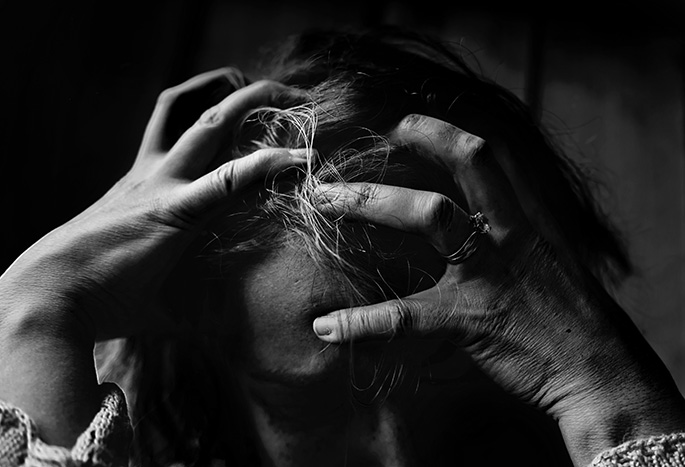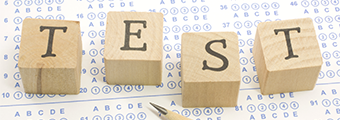How to deal with a panic attack?

What is a panic attack ?
When talking about a panic attack, it is important to distinguish between panic attack, anxiety attack and panic disorder, terms that can sometimes be confused.
Panic attacks and anxiety attacks have similar presentations. Both can be characterized by a strong sense of fear, discomfort and unease, increased heart rate, short, gasping breaths, tightness in the throat, dizziness, nausea, hotness, sweating and trembling.
The main difference between the two will be in the triggers and the thoughts that accompany them.
An anxiety attack often revolves around the anticipation of a stressful event, associated with the gradual accumulation of stress. Anxiety gradually increases until it reaches a breaking point, the crisis, which is accompanied by catastrophic thoughts about the feared event. It usually lasts less than 30 minutes.
A panic attack is much more sudden. The person is suddenly overwhelmed by fear, which may be triggered by certain specific events (such as certain physical sensations) or occur for no specific reason.
The thoughts of a panic attack revolve around the feeling of losing control and the intense fear of dying, fainting or going mad.
It usually lasts less than 10 minutes.
Panic disorder is a psychological disorder characterised by repeated panic attacks and the intense fear of having panic attacks. In this disorder, it is really a fear of being afraid. The symptoms of anxiety are highly anticipated and facilitate the occurrence of new panic attacks.
How do panic attacks work?
Panic attacks arise from the catastrophic interpretation of fearful sensations, which are perceived as dangerous. It is difficult or impossible to avoid them. All attention is then focused on these physical sensations and the consequences of their presence, often the fear that these sensations mean imminent death or fainting.
The first few panic attacks are really focused on these catastrophic anticipations, but after a few repetitions, the main source of fear and trigger for panic attacks is the fear of the panic attack itself, which then forms a vicious circle.
The brain perceives an unpleasant physical sensation associated with the anxiety (e.g. increased heart rate). This sensation is perceived as the beginning of an anxiety surge. The fear of having a panic attack and the attempt to avoid it at all costs then begins, which increases the fearful sensations, which will be self-reinforcing, until they are strong enough to create the panic attack. This is followed by a long period of intense unpleasant sensations until exhaustion and the feeling that what has just happened must be avoided at all costs in the future, which reinforces the anticipation and sensitivity to future attacks.
What causes panic attacks?
Studies estimate that one in three people will experience a panic attack in their lifetime. For the majority of these people, it will be a handful of isolated attacks, linked to a state of physical and/or mental fatigue.
However, there are certain things that can make it easier to trigger panic attacks and develop a panic disorder.
- An anxious nature
- Catastrophic thinking patterns
- A fear of death or hypochondria
- An insecure environment during development
How to deal with a panic attack?
If panic attacks are rare and isolated, the best way to deal with them is to concentrate on your breathing to get back to a slow and regular rhythm. This breathing will slow down the heart rate and gradually reduce all anxiety symptoms. It is also possible to use anchoring techniques to get out of your thoughts and get back in touch with the world around you.
A common anchoring exercise is to say out loud five things you see, four things you hear, three things you touch, two things you smell and one thing you taste.
How can frequent panic attacks be treated?
When panic attacks become more frequent, the angle of management changes. The increase in the occurrence of attacks means that the triggers become more noticeable and sensitive and the anxiety is formed more around the anticipation of the attack rather than around the symptoms or the situation.
Work should then be placed around the perception of the anxiety and the mental reactions to it.
Anxiety is not dangerous! But it is perceived as such in panic disorder. Anxiety is simply an alert message, an alert that has become a little too sensitive. It is therefore necessary to accept that we feel this anxiety, because fighting against it leads to two things: to increase the attention we pay to it and its intensity, and to avoid feeling anxiety as much as possible, which increases the fear we feel when it starts to appear.
It is also important to deconstruct false beliefs: anxiety cannot make you faint or cause a heart attack. People with panic attacks have a fast and steady heart rate. A very slow heart rate can cause fainting (vagal discomfort) and an irregular heart rate can cause heart failure. Anxiety is a response of your body that is there to ensure your survival. It activates the fight-flight response to avoid danger.
Don’t believe everything your brain wants you to believe, especially when it tends to exaggerate in an attempt to protect you.
Learn to recognise and break down the sensations of anxiety, and then accept that you are feeling them, without fighting to make them go away. Give them room in your body and mind, and let your brain realise that you are not in danger, however unpleasant those feelings may be.
You can also learn to recognise the triggers of attacks, not to avoid them, but to prepare yourself to use your crisis management tools and to have the right frame of mind when you face them.
The best way to treat panic disorder, however, is to seek the help of a psychotherapist who will guide you and support you throughout your treatment.


